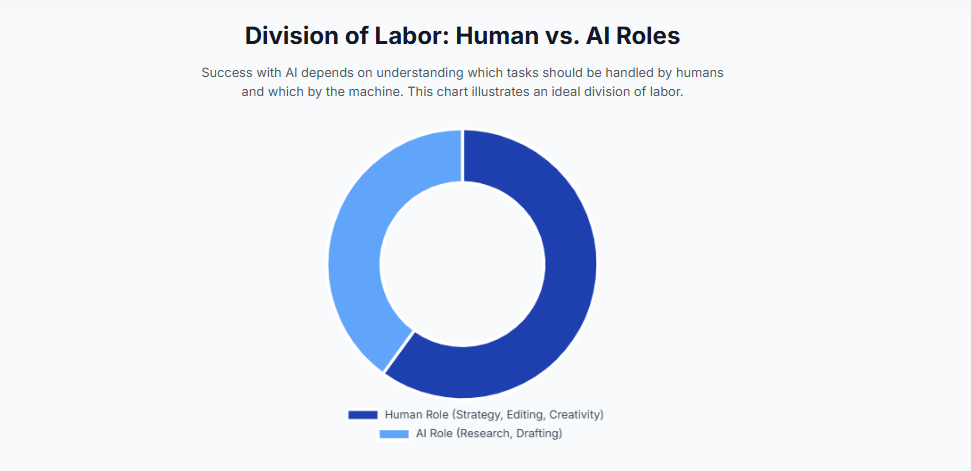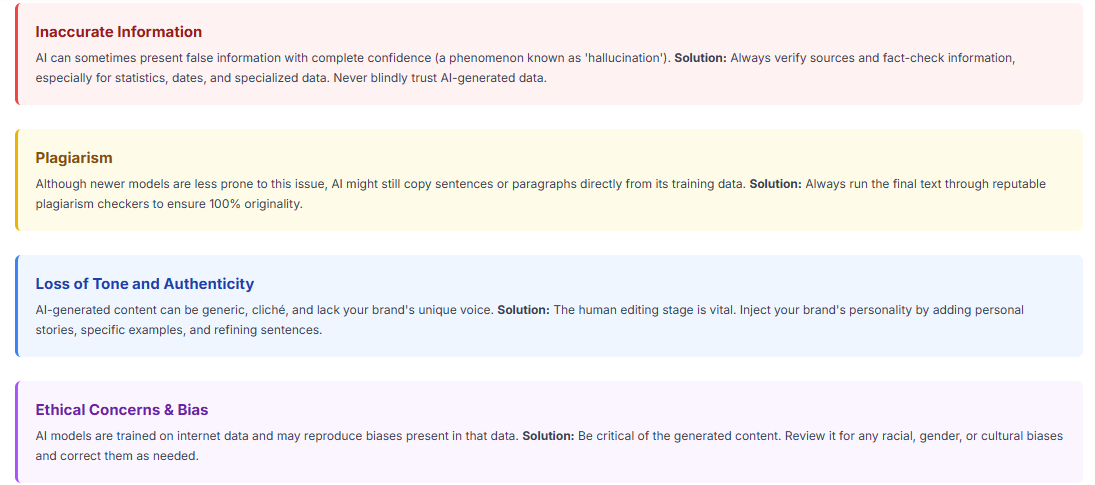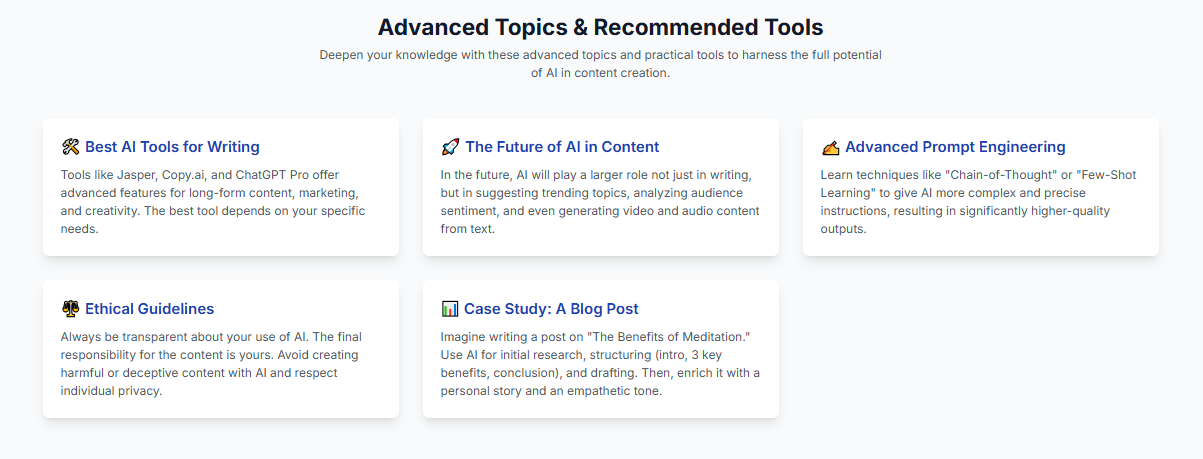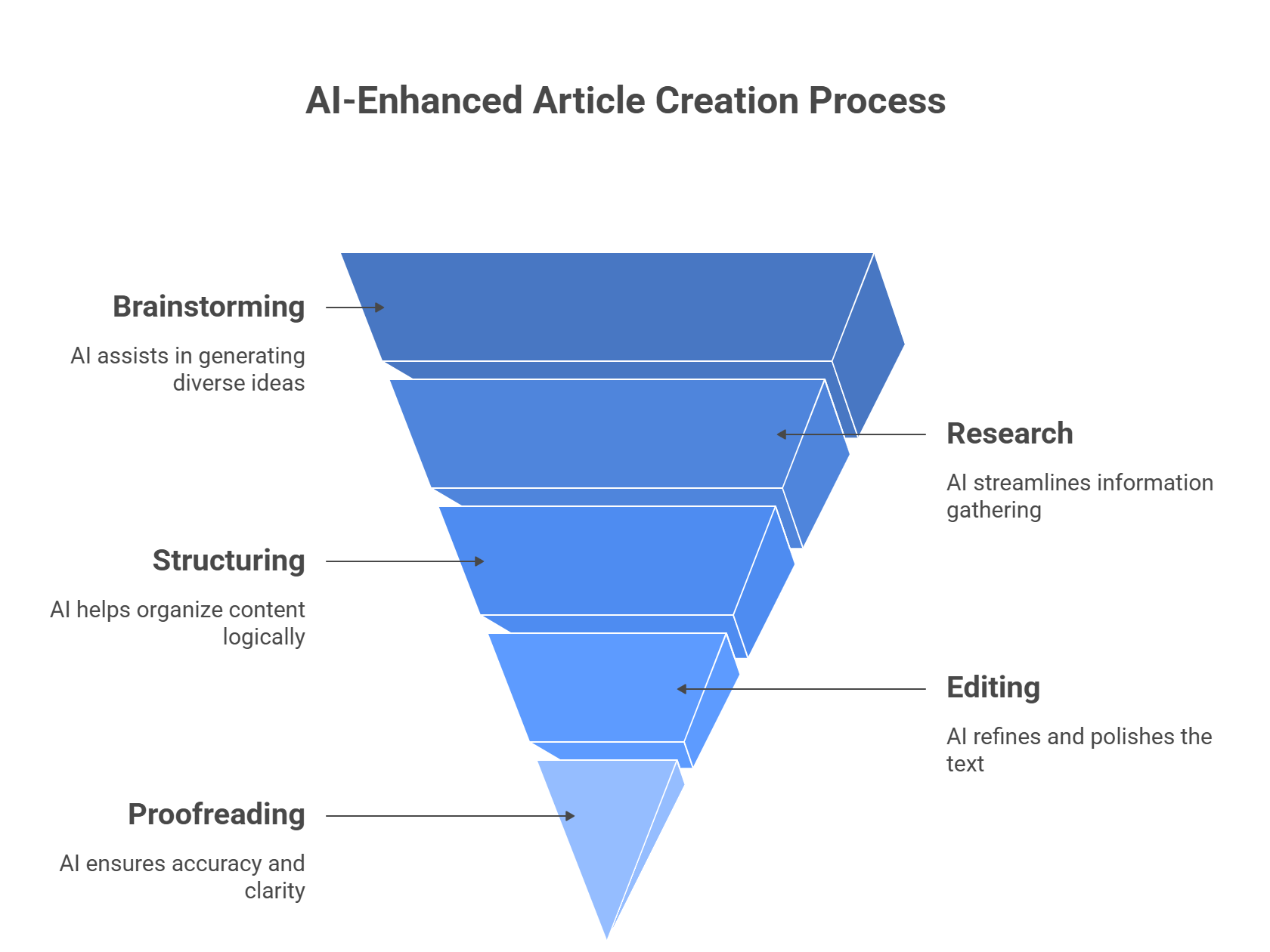The year 2025 marks a definitive inflection point in the landscape of professional content creation. Artificial intelligence, once a niche experiment for early adopters, has evolved into a central, indispensable component of modern workflows across journalism, marketing, and corporate communications. This transition has been catalyzed by the rapid and profound advancement of large language models (LLMs).
The emergence of highly capable, multimodal systems such as Anthropic’s Claude 3.5, Google’s Gemini 2.0, and OpenAI’s model o1—all possessing advanced reasoning and the ability to process text, audio, and images—signals the dawn of a new information technology era, one with the potential to be as transformative as the industrial revolution.
However, the prevailing narrative of AI as a simple automation tool, a machine to which one delegates tasks, is fundamentally incomplete. This report advances a more sophisticated and powerful paradigm: the concept of “superagency”. In this framework, AI is not a replacement for human intellect but a cognitive collaborator that amplifies human productivity, creativity, and strategic capacity.
It is a partnership where machines handle the mechanical and computational heavy lifting, freeing human professionals to focus on the uniquely human skills of deep strategic thinking, nuanced emotional intelligence, and ethical judgment. The result is a synergistic state that unlocks unprecedented levels of performance and innovation.
This report serves as a definitive strategic document for professionals seeking to master this new paradigm. It moves beyond basic tutorials to provide a comprehensive playbook for leveraging AI throughout the entire article creation lifecycle.
The analysis begins by establishing the data-driven business case for AI as a strategic imperative, quantifying its impact on efficiency and return on investment. It then provides a granular, step-by-step workflow for creating high-impact articles, from deep audience research to multi-format content amplification.
Recognizing that this powerful technology is not without its perils, the report offers a robust framework for navigating the critical risks and ethical minefields of AI-generated content, including misinformation, bias, and complex questions of authorship.
A curated, analyst-led guide to the 2025 AI toolkit follows, enabling professionals to strategically build their own integrated technology stack. Finally, the report concludes with a forward-looking perspective on the future of authorship, arguing that in an age of ubiquitous AI, the value of human expertise, creativity, and integrity will not only endure but become more critical than ever.
Summary of the article in the form of an audio podcast
Section 1: The New Content Paradigm: AI as a Strategic Imperative
The integration of artificial intelligence into professional writing is no longer a speculative trend but a quantifiable market shift with profound strategic implications. For organizations and individual creators, understanding the “why” behind AI adoption—supported by measurable data and a sophisticated collaborative framework—is the first step toward harnessing its full potential.

This section deconstructs the strategic value of AI, moving from high-level market dynamics to the tangible return on investment demonstrated by industry leaders, and introduces a more nuanced model for conceptualizing the human-AI partnership.
1.1 Quantifying the AI Advantage: From Efficiency Metrics to Strategic ROI
The economic and operational impact of AI in content creation is both significant and accelerating. The global market for AI in this sector, valued at $9.3 billion in 2022, is projected to reach $47.5 billion by 2030, growing at a compound annual growth rate (CAGR) of 22.8%.
This explosive growth underscores a fundamental shift in how content is produced and managed. By 2025, it is anticipated that AI-generated content will account for 30% of all marketing materials, a testament to its rapid integration into core business functions. More than 80% of marketing professionals believe AI will fundamentally transform their field within the next five years, making adoption less a matter of competitive edge and more a matter of strategic necessity.
This market-level data is substantiated by compelling case studies from leading global corporations, which illustrate a clear return on investment (ROI) that extends beyond simple cost savings to encompass enhanced efficiency, engagement, and strategic capacity.
Unilever: The consumer goods giant implemented AI solutions, specifically leveraging the GPT-3 model, to automate the creation of marketing copy and customer email responses. The results were transformative: a 90% reduction in the time required for drafting communications, a 15% increase in conversion rates from personalized advertisements, and an 85% enhancement in overall operational efficiency.
AI was also used to generate optimized product descriptions, leading to a 70% improvement in product visibility and sales.
Forbes: The global media company deployed an internal AI tool named “Bertie” to streamline its editorial workflow. Bertie assists writers by analyzing audience data to suggest relevant topics, generating rough drafts complete with relevant links and images, and optimizing content for search engines. This allowed Forbes to significantly increase its content output and improve SEO performance without compromising quality.
JPMorgan Chase: In a trial of the generative AI tool Persado, the financial institution found that AI-written marketing copy frequently outperformed copy written by human marketers, leading to higher click-through rates on display ads.
Broad Industry Impact: A wider study of firms that have integrated AI into their content strategies revealed a 30% increase in audience engagement rates and a 25% reduction in content production time. Similarly, a WAN-IFRA report from 2025 found that while only 9% of publishers could point to direct revenue gains from AI, 75% reported significant efficiency improvements, 64% noted better content production, and 55% achieved faster publishing times.
These examples reveal a crucial pattern. The primary, first-order benefit of AI is a dramatic increase in operational efficiency—tasks that once took hours or days can now be completed in minutes. However, this efficiency gain produces a more profound, second-order effect: the strategic reallocation of human capital.
By automating repetitive and mundane tasks, AI frees professional writers and strategists to focus on complex, creative, and uniquely human work. This shift allows organizations to redirect their most valuable resources—their employees’ cognitive and creative abilities—toward higher-value activities such as deep strategic analysis, original research, building source relationships, and infusing content with the authentic emotional resonance that machines cannot replicate.
Consequently, organizations that master this reallocation will not merely produce more content; they will produce smarter, more strategic, and more impactful content, establishing a sustainable competitive advantage built on amplified human expertise.
1.2 A Multidimensional Framework for Human-AI Collaboration
To effectively manage and optimize the human-AI partnership, professionals require a more sophisticated conceptual model than the simplistic, linear scale of AI involvement ranging from “none” to “complete.” Recent academic research proposes a multidimensional framework that more accurately reflects the complex and varied ways in which humans and AI can collaborate throughout the writing process.
This model deconstructs the partnership into four distinct but interconnected axes, allowing for a more strategic and intentional approach to leveraging AI’s capabilities.
Content Generation: This axis represents the most direct form of AI assistance, where the technology is used to produce text. This can range from generating a few alternative phrases to drafting entire sections of an article. In this role, the AI acts as an initial drafter or a text producer, rapidly converting ideas and research into prose. The human’s role is to guide this process through precise prompting and to critically evaluate the output.
Structural Assistance: Here, the AI functions as a content architect. It can be tasked with creating logical outlines from a collection of research notes, structuring a complex argument, suggesting transitions between paragraphs, or organizing an entire article to optimize its narrative flow and readability. This allows the human writer to focus on the substance of the ideas rather than the mechanics of their arrangement.
Creative Input: This dimension positions the AI as a creative partner or a brainstorming assistant. It can be used to generate novel ideas, explore different angles on a topic, suggest compelling metaphors or analogies, or experiment with various stylistic and tonal approaches. This form of collaboration helps writers break through creative barriers and discover fresh perspectives that they might not have considered on their own.
Analytical Contribution: In this capacity, the AI serves as an objective critic and analyst. It can provide feedback on a draft’s clarity, tone, and style; check for grammatical and syntactical errors; identify potential biases in the language; and even analyze the text for its potential impact on a specific audience. This analytical support helps refine and polish the final product to a professional standard.
By viewing the partnership through this multidimensional lens, professionals can move beyond a binary “use AI or not” decision. Instead, they can strategically choose how and where to deploy AI across the content lifecycle, tailoring its application to the specific needs of each project.
This framework underscores that AI can assist in many different aspects of writing without replacing human agency, thereby fostering a more powerful and nuanced collaborative dynamic.

1.3 The Rise of the Curated AI Stack
The maturation of the AI content creation market is evident in the shift away from reliance on a single, all-in-one tool toward the strategic curation of an integrated “AI stack.” A 2025 survey revealed that most professional creators now combine three or more specialized AI tools in their workflows, each chosen for its best-in-class capabilities in a specific domain. This trend indicates a sophisticated understanding among users that a one-size-fits-all solution is often suboptimal.
Building a personalized AI stack is a strategic decision that allows for a more powerful, flexible, and customized content creation process. A typical professional stack might include:
- A foundational LLM Chatbot (e.g., Claude, ChatGPT) for brainstorming, research synthesis, and initial drafting.
- A dedicated SEO Platform (e.g., Surfer SEO) for data-driven outlining and content optimization.
- An advanced Editing Suite (e.g., Grammarly) for polishing grammar, style, and tone.
- A Multimedia Generation Tool (e.g., Descript, HeyGen) for repurposing the final article into video scripts, audio clips, or social media assets.
This approach allows professionals to assemble an ecosystem of tools that mirrors and enhances their unique workflow, rather than forcing their process to conform to the limitations of a single application. The move toward curated AI stacks is a clear indicator that the industry is advancing from basic adoption to strategic optimization, where the careful selection and integration of tools become a key differentiator in producing high-quality content at scale.
Section 2: The AI-Enhanced Workflow: A Professional Playbook
Mastering the creation of professional articles with AI requires more than just access to the right tools; it demands a systematic and strategic workflow that integrates AI at every stage of the content lifecycle. The traditional, linear process of writing is being replaced by a more dynamic, iterative, and collaborative model in which the human professional acts as the director, critic, and strategist, guiding the AI through a series of feedback loops to achieve a superior final product. This section provides a granular, five-phase playbook for executing this modern, AI-enhanced workflow.
2.1 Phase 1: Strategic Foundation (Ideation & Research)
The foundation of any high-impact article is a deep understanding of its audience and a unique, compelling angle. AI dramatically accelerates and deepens this foundational phase, transforming it from a time-consuming manual process into a rapid, data-driven analysis.
The first step is to move beyond basic keyword research to achieve true audience empathy. AI tools can be used to process vast amounts of unstructured audience data from sources like online community discussions, customer support transcripts, survey responses, and product reviews.
By prompting an AI to analyze this corpus of text, a writer can quickly identify recurring pain points, unfulfilled desires, common questions, and key objections related to a topic. This provides a rich, qualitative understanding of the target reader’s mindset, ensuring the resulting article addresses their most pressing needs.
With a clear audience profile established, the next step is to find a unique angle that distinguishes the article from existing content. A powerful technique involves gathering the top-ranking articles on the chosen topic and using an AI to perform a comprehensive analysis.
The AI can summarize the core arguments, common themes, and key evidence presented in these competing pieces. More importantly, it can be prompted to identify “missing views”—perspectives that are not being discussed, audience needs that are not fully addressed, or opportunities for deeper, more comprehensive coverage. This gap analysis allows the writer to strategically position their article to provide novel and superior value.
Finally, AI serves as a powerful research assistant, drastically reducing the time spent on information gathering. It can scan and synthesize academic papers, industry reports, and news articles to extract key statistics and data points.
When provided with transcripts of interviews or webinars, AI can pull out the most compelling quotes and identify unique insights. Furthermore, many tools can assist in formatting citations in styles like APA, MLA, and Chicago, streamlining a traditionally tedious task.
2.2 Phase 2: Architectural Design (Outlining & Structuring)
A well-structured outline is the blueprint for a clear and persuasive article. AI transforms the outlining process from a blank-page challenge into an act of architectural refinement, allowing writers to quickly build and iterate on a logical framework for their content.
The process begins by feeding the AI the key outputs from the research phase: the audience persona, the identified unique angle, and the synthesized research findings. With this context, the AI can generate a detailed and coherent initial outline, complete with hierarchical headings and subheadings that map out a logical flow for the article.
However, this first draft of the outline should be treated as a starting point, not a final product. The critical next step is an iterative collaboration between the writer and the AI. The writer reviews the structure, identifies areas for improvement, and provides feedback to the AI to refine the blueprint.
This dialogue can involve making headings more action-oriented to better capture reader interest, reordering sections to improve the narrative arc, or breaking down complex points into more digestible sub-sections. This iterative process ensures the final structure is not just logically sound but also strategically designed to guide the reader on a clear and compelling journey.
For content where search engine visibility is a priority, this phase should also incorporate specialized SEO tools. Platforms like Surfer SEO can analyze the top-ranking pages for a target keyword and provide data-driven recommendations for the article’s structure, including which topics and subheadings to include to meet what it terms “AI search expectations”. Integrating these recommendations into the outline ensures the article is architecturally optimized for discoverability from the outset.
2.3 Phase 3: Content Generation (The Art of the First Draft)
With a robust outline in place, the focus shifts to generating the initial draft. This phase is a masterclass in prompt engineering and contextual guidance, where the writer’s skill lies in their ability to direct the AI to produce high-quality, relevant prose.
Effective prompting goes far beyond simple commands. A masterful prompt is a detailed creative brief that provides the AI with rich context. It should specify the target audience, the desired tone of voice (e.g., “professional yet approachable,” “authoritative and academic”), the approximate word count for the section, any key terminology or brand-specific language to include, and even negative constraints outlining what to avoid (e.g., “avoid clichés,” “do not use overly technical jargon”). The more specific the instructions, the more tailored and useful the AI’s output will be.
One of the most powerful techniques for generating a coherent, high-quality draft is to build “progressive context”. Instead of asking the AI to write the entire article at once, the writer guides it section by section, feeding it the relevant information in stages. For example, to draft the introduction, the writer would provide the AI with the audience persona, the overall article thesis, and the finalized outline.
Then, for each subsequent body section, the writer would provide the specific part of the outline being addressed, along with the relevant research points and quotes for that section. This incremental approach ensures the AI always has the immediate context it needs, resulting in a much more focused and logical draft.
This process should be viewed as a dialogue, not a dictation. The writer’s role is to act as a director, providing the initial prompt, reviewing the AI’s output, and then offering feedback for revisions. This might involve asking the AI to expand on a point, provide an alternative phrasing, or adjust the tone. This human-guided generation ensures the first draft is not just a block of text but a well-structured piece of writing that is already closely aligned with the writer’s strategic goals.
2.4 Phase 4: Refinement & Validation (The Human Imperative)
The AI-generated first draft is not a finished product; it is high-quality raw material that requires the indispensable touch of human expertise. This phase is where the article is elevated from competent to compelling, and it is centered on the non-negotiable roles of editing, fact-checking, and the infusion of authenticity.
The primary task is for a human editor to meticulously refine the draft. AI can replicate patterns of good writing, but it cannot possess a genuine voice—what one sociologist calls the “elusive fingerprint of all textual communication”.
The editor’s job is to rewrite and polish the text to ensure it aligns with the brand’s unique voice, possesses a consistent style, and carries the intended emotional resonance. This involves adjusting sentence structure, improving word choice, and ensuring the overall narrative is engaging and persuasive.
Parallel to the stylistic edit is the critical and mandatory process of validation. AI models are known to “hallucinate,” or invent facts, statistics, and sources with complete confidence. Therefore, every factual claim, statistic, quotation, and reference in the AI-generated draft must be rigorously verified against primary, authoritative sources. This step is a fundamental aspect of professional and ethical responsibility and is the single most important safeguard against publishing inaccurate or misleading information.
Beyond correcting and verifying, the writer must actively inject authenticity into the text. This is what transforms a generic, data-driven article into a piece of authoritative thought leadership. It involves weaving in personal anecdotes, sharing unique expert insights, providing real-world examples from personal experience, and offering a distinct point of view that cannot be found in the AI’s training data. This is the layer of value that only a human expert can provide.
During this phase, AI can once again serve as a powerful assistant. Advanced editing suites like Grammarly can be used not only for basic error correction but also for sophisticated stylistic refinement. These tools offer AI-powered suggestions to improve clarity, conciseness, and tone, and can even perform full-paragraph rewrites to help polish the final text to a professional standard.
2.5 Phase 5: Amplification (Asset Creation & Repurposing)
The value of a professional article is significantly enhanced by its ability to be amplified and repurposed across multiple channels. AI provides a suite of tools that can rapidly transform a single text-based article into a comprehensive, multi-format content package, maximizing its reach and impact.
One of the most immediate ways to enhance an article is through the creation of supplementary multimedia assets. AI tools like DALL-E, Midjourney, or Canva’s Magic Studio can generate custom images, infographics, or charts based on simple text prompts, providing visual elements that can break up text and illustrate key points. For more dynamic content, platforms like Lumen5 can automatically convert a finished article into a short, animated explainer video suitable for social media or email newsletters. If the article is based on an interview or webinar, tools like Adobe Podcast or Descript can be used to clean up the source audio and extract key clips for a podcast version.
Beyond enhancement, AI excels at content repurposing at scale. Once the final article is complete, it can be fed back into an LLM with a series of prompts to generate a wide variety of derivative assets. For example, a writer can ask the AI to:
- “Summarize this article into a 10-part Twitter thread, with each tweet under 280 characters.”
- “Write a 300-word summary of this article for an email newsletter, including a compelling subject line.”
- “Convert the key arguments of this article into a 10-slide presentation outline, with a title and three bullet points for each slide.”
- “Write a 60-second video script based on the introduction and conclusion of this article.”
This ability to instantly atomize a long-form piece into multiple formats allows content teams to maintain a consistent and high-volume presence across all their channels, all stemming from a single, well-researched core asset. This entire workflow reveals a fundamental evolution in the professional writing process.
It is no longer a linear sequence of discrete tasks but a dynamic, cyclical, and highly collaborative “human-AI feedback loop.” The human professional provides a strategic prompt; the AI generates an output; the human then critically evaluates, refines, and enriches that output, which in turn becomes the context for the next, more sophisticated prompt.
This iterative cycle implies a significant shift in the core competencies required of a professional writer. The most valuable skill is no longer solely the ability to craft elegant prose, but the ability to strategically direct, critically evaluate, and synthesize information within this complex loop. The professional writer is evolving into an “AI Orchestrator,” whose primary value lies in the quality of their judgment, creativity, and strategic direction.

Section 3: Navigating the Pitfalls: A Framework for Responsible and Ethical AI Use
The transformative power of artificial intelligence in content creation is accompanied by significant risks that demand a robust framework for responsible and ethical use. For professionals and organizations, navigating these pitfalls is not merely a matter of best practice;
it is a critical component of risk management, brand protection, and maintaining audience trust. This section provides a clear-eyed analysis of the three primary challenges—hallucinations, the authenticity gap, and legal and ethical ambiguities—and offers an actionable framework for mitigating them.
3.1 The Hallucination Problem: Combating AI-Generated Falsehoods
One of the most pressing dangers of relying on generative AI is the phenomenon of “hallucination,” where a model generates confident, plausible-sounding, but entirely incorrect or fabricated information. These errors stem from fundamental limitations in the technology, including being trained on flawed or biased data, “overfitting” to patterns in that data without true comprehension, and a lack of real-world grounding to distinguish fact from fiction.
The consequences of publishing AI hallucinations can be severe. In the legal profession, lawyers have been sanctioned and fined by courts for submitting legal briefs that cited entirely fabricated case precedents generated by ChatGPT.
In the corporate world, Google’s parent company, Alphabet, reportedly saw its market value drop by $100 billion after its AI tool Bard produced a factually incorrect statement in its first public demonstration. These high-stakes examples underscore that unverified AI output poses a significant threat to professional credibility and organizational reputation.
Mitigating the risk of hallucinations requires a multi-layered defense strategy:
Technical Safeguards (Retrieval-Augmented Generation): A leading technical solution is Retrieval-Augmented Generation (RAG). This approach connects the AI model to a curated, external knowledge base of reliable and up-to-date information. When responding to a prompt, the AI is forced to “retrieve” information from this trusted source and use it to “augment” its response, thereby grounding its output in verified facts rather than relying solely on its internal training data.
Sophisticated Prompting Techniques: Professionals can reduce the likelihood of hallucinations through careful prompt engineering. One effective method is “chain-of-thought” prompting, which instructs the model to break down its reasoning step-by-step before providing a final answer. This makes it easier to spot logical fallacies. Another crucial technique is to include an explicit instruction in the prompt such as, “If you do not know the answer or cannot provide a factually accurate response based on verified sources, state that you do not have the information”.
Mandatory Human Verification: The ultimate and most critical safeguard is rigorous human oversight. Every single factual claim, statistic, date, name, and quotation generated by an AI must be treated as unverified until it has been manually cross-checked against multiple authoritative, primary sources. This non-negotiable validation process is the final line of defense against publishing falsehoods.
3.2 The Authenticity Gap: Avoiding Generic Content and Algorithmic Bias
Beyond factual accuracy, a second major challenge is the risk of creating inauthentic content. Over-reliance on AI can lead to a deluge of generic, formulaic, and emotionally shallow articles that all sound the same. This “oversaturation of generic content” makes it increasingly difficult for brands and creators to stand out and connect with audiences on a meaningful level.
Compounding this issue is the problem of algorithmic bias. AI models are trained on vast datasets of text and images from the internet, which contain and reflect existing societal biases. As a result, AI systems can inadvertently perpetuate and even amplify harmful stereotypes related to gender, race, and other characteristics. Without careful oversight, a marketing team could, for example, generate ad copy or imagery that reinforces outdated social norms, causing significant brand damage.
The primary solution to both the generic content problem and algorithmic bias is the strategic and consistent involvement of the “human-in-the-loop.”
Safeguarding Authenticity: The human writer and editor are the ultimate guardians of brand voice and authenticity. Their role is to take the AI-generated draft and infuse it with the elements that machines cannot replicate: unique storytelling, genuine emotional intelligence, expert perspective, and a distinctive stylistic flair. This ensures the final product is not just algorithmically optimized but also deeply human and resonant.
Mitigating Bias: Professionals must act as ethical auditors of AI output. This involves actively reviewing generated content for potential bias, ensuring that language is inclusive, and checking that imagery is representative. Best practices also include using diverse datasets for training or fine-tuning models where possible and conducting regular fairness audits on AI-generated content to identify and correct problematic patterns.
3.3 The Legal & Ethical Compass: Authorship, Disclosure, and Integrity
The integration of AI into the writing process introduces complex legal and ethical questions surrounding authorship, originality, and transparency. A clear understanding of the current landscape is essential for maintaining professional integrity.
Authorship and Copyright: Under current U.S. copyright law, authorship is limited to human beings. An AI cannot be listed as an author, and text or images generated solely by an AI are not eligible for copyright protection. This has significant implications for publishing contracts, which almost universally require the author to warrant that their work is original. Including a substantial amount of unedited AI-generated text in a manuscript could constitute a breach of this warranty.
A Framework for Disclosure: Transparency is paramount for building and maintaining trust with audiences and publishers. Based on guidelines from professional organizations like the Authors Guild, a practical disclosure framework can be adopted. A distinction should be made between:
- AI-Assisted Work: Where AI is used as a tool for brainstorming, research, grammar checking, or minor editing. In these cases, disclosure is generally not considered necessary.
- AI-Generated Work: Where AI has produced significant portions of the final text. In these instances, clear disclosure is ethically required. This can take the form of a note in the introduction or acknowledgments, or a disclaimer at the beginning or end of the article.
Plagiarism and Originality: Because AI models are trained on vast amounts of existing, often copyrighted, material, there is a risk of unintentional plagiarism, where the model reproduces text from its training data without attribution. To mitigate this, all AI-generated content should be processed through robust plagiarism and AI-detection tools as a final verification step before publication. This is a crucial due diligence measure to protect against accusations of academic or professional misconduct.
The convergence of these risks—factual, reputational, and legal—demonstrates that establishing a rigorous ethical framework for AI use is no longer a peripheral concern. It has become a central pillar of corporate risk management and brand strategy. The processes required to ensure responsible AI use, such as mandatory fact-checking, bias audits, transparent disclosure policies, and robust human oversight, are not merely editorial guidelines; they are essential protocols for protecting an organization’s credibility and integrity.
In an information ecosystem increasingly flooded with low-quality and unreliable AI-generated content, companies that can verifiably demonstrate a commitment to accuracy, authenticity, and ethical transparency will build a powerful “trust premium” with their audience, turning responsible AI governance into a significant competitive advantage.

Section 4: Curating Your AI Toolkit: An Analyst’s Guide to the 2025 Landscape
Navigating the expansive and rapidly evolving ecosystem of AI tools requires a strategic, analytical approach. The modern professional does not rely on a single application but instead curates a personalized “stack” of best-in-class tools, each selected to perform a specific function within their content creation workflow. This section provides a curated guide to the essential categories of AI tools for 2025, organized to facilitate strategic decision-making and the construction of a powerful, integrated toolkit. The following table breaks down the landscape into five key functional categories, offering examples of top tools, their primary use cases in article creation, and the strategic value they provide.
Category |
Top Tools (Examples) |
Primary Use Case in Article Creation |
Strategic Value & Key Considerations |
LLM Chatbots & Writing Assistants |
Claude 3.5, ChatGPT-o1, Jasper, Copy.ai |
Ideation, research synthesis, outlining, first-draft generation, repurposing. |
Value: These are the core engines for content generation and serve as indispensable creative partners. They excel at transforming raw ideas and research into structured prose. Considerations: Tool selection depends on the specific task. Claude is often preferred for its ability to generate nuanced, coherent, and creative long-form prose. Jasper is highly specialized for marketing and sales copy, with robust features for maintaining a consistent brand voice across multiple campaigns. ChatGPT remains a powerful and versatile all-rounder, particularly effective for brainstorming and structuring ideas. |
SEO & Research Platforms |
Surfer SEO, Frase IO |
Keyword research, competitive analysis, data-driven content brief generation, on-page optimization scoring. |
Value: These platforms ensure that content is not only well-written but also discoverable and strategically aligned with search engine intent and audience queries. Considerations: Modern SEO tools move beyond simple keyword density. They provide sophisticated, data-driven guidance on article structure, topical depth, and semantic relevance, helping to create content that is “answer-worthy” for both human readers and search algorithms. |
Editing & Grammar Suites |
Grammarly, ProWritingAid, Hemingway Editor |
Real-time grammar and spelling correction, advanced style and tone suggestions, clarity improvements, plagiarism detection. |
Value: These tools are essential for polishing raw AI-generated drafts to a professional standard, ensuring clarity, correctness, and consistency. Considerations: The capabilities of these suites have expanded far beyond basic proofreading. Grammarly, for instance, now incorporates powerful generative AI features, offering strategic suggestions to strengthen arguments, anticipate reader questions, and perform full-paragraph rewrites with a single click, making it a comprehensive editing partner. |
Multimedia & Design Tools |
Canva (Magic Studio), Descript, ElevenLabs, HeyGen, Lumen5 |
Generating custom images and visuals, editing video and audio directly from a text transcript, creating realistic AI voiceovers, producing AI avatars for video. |
Value: This category of tools is critical for amplifying the impact of a written article by transforming it into a rich, multi-format content package that can be distributed across various channels. Considerations: The innovation in this space is rapid. Descript’s text-based video editing, which allows users to edit video by simply editing the transcript, is a game-changing technology for repurposing interviews, webinars, and podcasts into shareable clips. Tools like ElevenLabs are producing AI voices that are increasingly indistinguishable from human narration. |
Plagiarism & AI Detection Services |
Winston AI, Copyleaks, Originality.ai, GPTZero |
Verifying the originality of content, checking for unintentional plagiarism against a vast database of sources, and detecting the likelihood that text was generated by an AI model. |
Value: These services are a critical final checkpoint for risk management, essential for maintaining academic integrity, professional credibility, and brand reputation. Considerations: The accuracy of AI detectors can vary, and they should be used as one tool among many in an ethical framework. For professional and academic contexts, tools like Winston AI and Copyleaks are consistently highly rated for their accuracy and low rates of false positives, making them reliable choices for final verification before publication. |
Conclusion: The Future of Authorship and the Enduring Value of Human Expertise
As the capabilities of artificial intelligence continue to advance at an exponential rate, the landscape of professional writing is undergoing a fundamental and irreversible transformation. The analysis presented in this report leads to a clear and powerful conclusion: mastering AI for professional article creation is not a process of ceding control to algorithms but of achieving a new, elevated state of “superagency.”
The successful professional of the future will not be the one who can be replaced by a machine, but the one who becomes an expert collaborator—a strategist, director, critic, and ethicist who skillfully orchestrates AI to achieve unprecedented levels of quality, efficiency, and impact.
Looking toward the horizon, several key trends are poised to further shape this evolving relationship between human and machine. The industry is moving beyond single-task tools toward more sophisticated agentic AI systems that can autonomously manage entire workflows, from conducting initial research to drafting content and even planning distribution strategies. This will demand an even higher level of strategic oversight from human professionals, whose role will shift further from “doing” to “directing.”
Concurrently, advancements in AI will enable hyper-personalization at scale, allowing for the creation of dynamic content that adapts in real-time to the needs, preferences, and knowledge levels of individual readers, transforming the static article into an interactive experience. This evolution will be set against a backdrop of a continuously developing legal and ethical landscape. Issues surrounding copyright, data privacy, and intellectual property in the age of generative AI are far from settled, and ongoing regulatory developments and landmark legal cases will continue to define the boundaries of responsible AI use.



